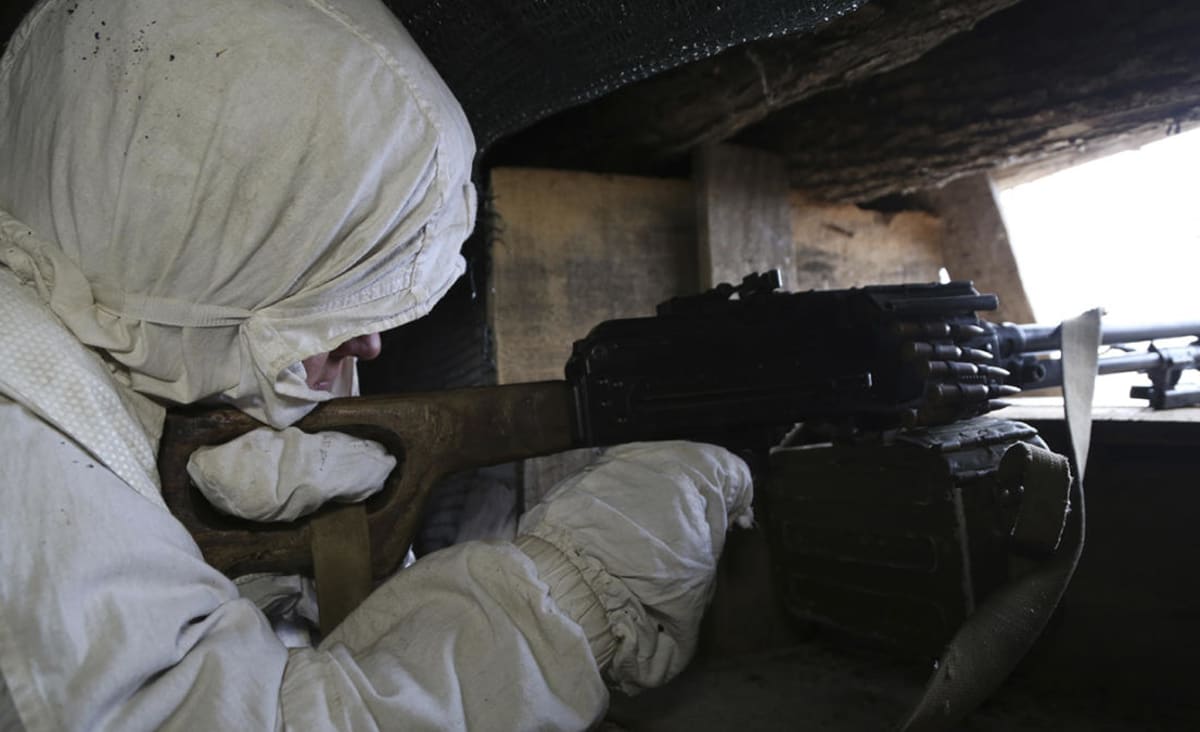
www.yahoo.com
Here's what happening at Ukraine's border with Russia
For months, Russian troops have been increasingly positioning themselves at the Ukrainian border, traveling there from as far away as Siberia, sparking concerns of a planned incursion.
International
For months, Russian troops have been increasingly positioning themselves at the Ukrainian border, traveling there from as far away as Siberia, sparking concerns of a planned incursion.
Now Russia’s potential invasion of Ukraine has embroiled the Biden administration and its European allies in an acute diplomatic crisis.
With roughly 100,000 Russian soldiers, as well as tanks, artillery, helicopters and other equipment amassed to Ukraine’s north, east and south, many U.S. policymakers believe it is not a question of whether Russia will launch a new invasion of Ukraine, but how extensive that military campaign will be.
This latest crisis follows years of aggression from Moscow toward Kyiv. In early 2014, Russian special forces stealthily invaded Ukraine’s strategically positioned Crimean Peninsula. Russia, ignoring international outcry, annexed Crimea soon after. That same year, Russian-backed separatists seized control of two eastern Ukrainian provinces, sparking a war there that has simmered ever since. An estimated 13,000 people have been killed in the conflict.
Breakneck talks between the U.S. and its European allies and Russia over the last two weeks have failed to resolve the crisis. Russia has demanded that NATO forbid Ukraine from ever joining the Western alliance, and also that it limit the deployment of NATO troops or weapons in countries on Russia’s border.
The U.S. and other NATO countries have rejected these proposals, citing the right of any qualifying country to join the alliance. Some Western officials view the Russian demands as so outlandish as to potentially be designed to scuttle talks.
On Wednesday, President Biden said he believed that Russian President Vladimir Putin “will move in” on Ukraine but warned of “severe costs and significant harm on Russia and the Russian economy” should Moscow invade.
Russia has lobbed counterthreats, saying it views certain kinds of sanctions — like cutting the country off from the international financial payments system — as tantamount to breaking off diplomatic relations, and has also threatened to move troops or military equipment to Cuba or Venezuela.
Russia’s endgame is opaque. Some analysts believe that Putin has backed himself into a corner and would now face negative domestic political consequences if he does not conduct some type of military offensive after months of saber-rattling.
Last week, the U.S. said it had intelligence showing that Russian troops were preparing a “false flag” operation in eastern Ukraine designed to make it appear that Ukrainian forces were attacking Russian troops — and that any Russian response would therefore be defensive in nature. U.S. officials believe the false flag could serve as the pretext for an invasion.
In what many experts believe is a preview of Russian actions during a larger military campaign, last week 70 Ukrainian government websites were also subject to a cyberattack.
Russia’s military action in Ukraine could vary widely. One potential campaign might include seeking to establish a “land bridge” across Ukraine to Crimea. Another scenario could involve outright annexation of the separatist-held eastern provinces.
But U.S. officials fear that Russia might undertake a much more ambitious campaign, potentially seeking to occupy a much larger swath of Ukraine — and potentially even the Ukrainian capital, Kyiv, itself.
At his Wednesday press conference, Biden alluded to Russia’s ambiguous objectives, saying that “it’s one thing if it’s a minor incursion — as opposed to a large-scale invasion by Moscow — and we end up having to fight about what to do and not to do.” Biden’s remark drew a public rebuke from the Ukrainian president, and the administration walked it back.
Since 2014, the U.S. has provided Ukraine with more than $2.5 billion in military aid. U.S. special operations forces have also helped advise the Ukrainian military. Yahoo News has revealed that, since 2015, CIA paramilitaries have trained Ukrainian special operations forces and other intelligence personnel at an undisclosed facility in the Southern U.S., and the agency has sent paramilitaries to Ukraine to advise counterparts there.
























































